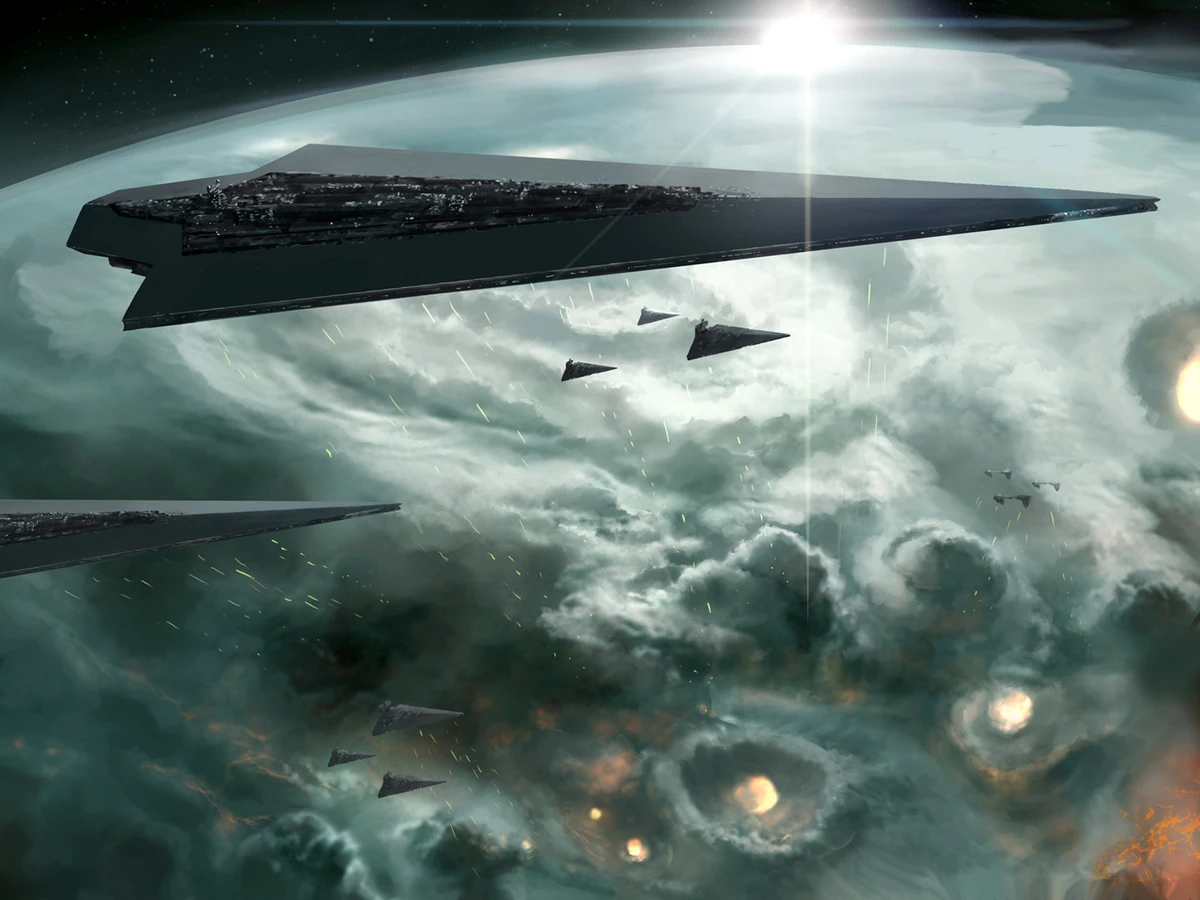That's "dumb" ballistic weapons only, of course anyone using those would not use them in a role as long range weapons. Does not apply to guided missiles and other weapons with some sort of guidance and terminal maneuvering.To pull back to the bigger picture, I'll try summarizing some of my thoughts on ground forces.
1) Ground assets are likely cheaper than space assets.
To be useful, space assets have to have longer range and accuracy than a ground asset. A modern tank gun is extremely accurate over a 1-2 km range. An accuracy of 100,000 nanoradians gives a spread at 2 km of roughly 0.2 m. The same accuracy over a 100 km gives a spread of 10 meters, 1,000 km 100 meters.
An order of magnitude in improved accuracy/range likely implies more than an order of magnitude increase in cost (depending on the exact cost curve).
Also the space forces get their missiles and bombs boosted by gravity well rather than having to spend dV on making them leave it.
Hence space asset heavy "control" would have to be heavy on what space assets do well, as in destroying things.2) Holding and controlling territory with air assets alone is very difficult/impossible, space generally increases all those problems: much higher minimum useful accuracy, longer range, shorter time over target, observation difficulties, likely comparatively high upkeep/sustainment costs and thus also high logistical cost, high unit cost which leads to lower number of units available/increased difficulty of replacement, which further makes attrition costs extreme.
Anything that protects from orbital bombardment would have to be effectively indistinguishable from protection against superheavy artillery. In conclusion, we are talking about something along the lines of hardened command posts and nuclear shelters *at minimum*, not a fighting position with some berms and trenches.3) Combined arms is a thing, and I believe would still be a thing in space. For example, dispersion, high mobility, and heavy fortifications are all effective mitigating the effective firepower of space. Heavy dispersion however makes the enemy weaker at resisting ground forces, and some types of cover that may hide a target against distant space targets may be dramatically less effective against surface level scouting, and having to protect against orbital bombardment and infantry/armor dramatically increases the complexity of fortifications and raises the minimum viable scale of a mobile units: it would be quite unpleasant to lose an expensive anti orbital system to a commando with a demolition charge, but adding a IFV with infantry to guard every such platform likely represents a large increase in logistic consumption and makes a larger vehicle group, increasing chance of detection.
Now, some of the immediate counter arguments, and why I think they may be relatively limited.
Besides the weapon scaling, sensors, technological difference, and the gravity well effect.1) Orbital superiority: The classic argument that who has the high ground wins. That once the space battle is over, the surface might as well surrender due to their compete helplessness. I obviously disagree with this.
a) If both the space and planetary forces are on equal technological footing, they likely have roughly equivalent range and accuracy: if a space weapon can accurately engage a surface target at x range, a surface vehicle likely has comparable range against a space target. While there would be some variations dependent upon the specific technology, for the same tech level I would expect a degree of completeness between space and surface assets, rather than crushing advantage one way or the other.
That maneuver ability is absolutely relevant to combat though, especially with how relatively hard it is to create anti starship "area weapons".b) If anything, I expect a degree of superiority to surface assets, due to their grounded nature: easier to hide, less dependent on high tech for basic functionality (a space cruiser may be 10% by mass advanced weapons and 40% advanced engines to maneuver: a space cruiser can just be 10% advanced weapons, so for the same "advanced tech" budget you can equip 3-5 cruisers, built out of cheaper materials because saving every gram is not as critical. Or you can power laser batteries off the general grid and move equipment by truck/train/barge, requiring less tight and exacting weight optimization.
Generally, something along the lines of a defenders advantage. Tactics, doctrine, and details of the tech will swing the specifics, but for relatively equivalent investments space having the decisive advantage on its own seems unlikely to me.
Lets say the cruiser is on low orbit and some sort of ground based platform sling identical railgun slugs at each other, and they have 60 seconds to dodge. Not only the ground platform's slugs get slowed by the gravity well, well, what will it do? If it moves like a average MBT, at roughly 60 kph, it may get 1 km away from the impact point. If the shell has some kind of terminal maneuvering or a large nuke, it's fucked.
The space cruiser meanwhile has options. It can do a calm .2 g maneuver. It's gonna be missed by over 3km, in space that's enough to make nuke ineffective, and it will take considerable sensors and terminal maneuvering to correct for it (guidance in atmosphere can be simpler, using fins, rather than full on rockets). A more ambitions emergency maneuver of 1.5g will put it 27km off course.
Or it can just save dV and instead try to use its point defense weapons to throw the slug off course. Especially if it has laser PD. If 30 seconds before impact it can change the slug's course by mere 25 m/s in any way by burn-off, that means it will miss by half a kilometer, not to mention damage to any more advanced warheads, guidance or sensor systems the slug may contain.
That sort of matter gets generally dictated by political\strategic impositions above all. If it's so important it warrants a space invasion, you may well have the space invaders be willing to cover a 100 km belt around the strategic location with autonomous killbots and non-decaying nerve gas jelly spray. That way no one without power armor, aircraft or an armored vehicle will be crossing it, and they won't be crossing it easily or quietly then.c) Even with complete orbital superiority, that seems likely to push enemy ground forces directly to a guerilla campaign, which will require a ground forces anyways. If Orbitals can't be contested, that suggests the correct response is to not contest them: Don't defend what can't be defended, instead focus on force preservation and try to stretch the enemy thin. If the enemy for example wanted to conquer Texas for oil production because the broader campaign their fighting requires oil, don't seriously contest the conquest of Texas, certainly not to the degree of overly sacrificing forces for it, but let them go in, preserve your own people and infrastructure as much as you can, and pull back to the limit of their logistical ability.

Getting a perimeter around those big oil producers around Texas is about a 5,000 km perimeter, with an interior of roughly 2 million km^2. If they're deploying an army of 1-2 million men, that's likely something like the limit if you can maintain an army in being capable of at least threatening and harassing that perimeter (with the enemy having orbital superiority, decisive breakthroughs are probably less likely, and just highly risky). You can keep the enemy control limited and in a position to be atritted, while preserving a lot of your people and infrastructure.
Exactly how this is carried out is of course setting dependent, and probably more viable the more politically complex the situation is. Invading Space Afghanistan is complicated if the Taliban can set up a government in exile in space Pakistan a system over, from which they can lobby other powers and smuggle weapons and general support to the resistance. Even more complicated if the space Pakistan is in the same system, or on the same planet . . .
If there is any chance of space relief force, the blocking fleet would do better to intercept it in high orbit or deep space, where any but largest, longest ranged strategic weapons of the defenders, for some reason never used earlier, would be relevant.d) Combined arms I think does make the forces more effective: Space and ground forces are likely more effective together than each alone. This is important in any resource constrained situation: If you can afford to just have space cruisers zapping bunkers as identified for 10 years, then you don't need to bother. But if you have senators questioning the progress of the campaign compared to its expense? Or your in a situation where winning in the orbital of this planet doesn't mean the enemy fleet is destroyed: maybe the enemy Admiral could also do the math and knew his chance of victory was low, so gave up the orbital without a fight and withdrew to some asteroid naval fortresses to also carry out space guerilla war/wait for a favorable opportunity.
This mean you want to secure the planet more thoroughly, because if you do weaken the space force to chase the enemy fleet or move onto another target, if there are significant reserves on the planet, they might be able to inflict serious casualties on the garrison force, or if the enemy is able to move a relief space force, your ships will be caught between the planets firepower and the relief forces.
Of course a wannabe space empire would need to have more logistical capability than a 7-8 billion single-planetary civilization, nevermind a single 340 million superpower in it, especially before it tries to go around conquering highly developed and defended planets (a small mining\research colony with 100k people spread through few hundred small outposts all over the planet will obviously be far easier).2) Transporting is expensive in space, and an invasion force is too heavy.
Invading a planet, especially a heavily populated one, is a huge undertaking, and with current space costs completely infeasible. I have two main counterpoints:
a) Its not necessarily all that much in the grand scheme of things. Lets say 1 million man force, equipped with 10 tons of equipment per man, a fairly heavy level of supply, so 10 million tons. That is quite a lot of mass. However, in comparison the US navy has roughly 4.6 million tons of displacement, and would be a pretty small fleet compared to world conquering. Earth's total civilian fleet transport capacity in 2022 had roughly 2.2 billion tons of cargo capacity. If the future space empire had as much space logistical capacity as we currently have navally on earth, and those craft only made 1 trip a year, moving 1 million man army would represent 0.45% of the merchant marine capacity. If they're averaging monthly trips, 2.2 billion tons of cargo represents the ability to move 26.4 billion tons per year.
In that case, moving a force to invade earth at the optimal occupation rate of 1 soldier per 40, so for our 8 billion man planet a force of 200 million men, with 10 tons of equipment per soldier for 2 billion tons transported, represents some 7.6% of cargo capacity. Not a trivial ask, but not a crippling one either. Maybe to appease the shipping companies the burden can be lowered by determining conquering earth is a 4 year campaign, not a 1 year campaign, so they only need to deliver 1 million men a week to the surface, and the civilian fleet only needs to commit 1.9% of their annual output to the campaign.
And all cost benefit analysis has to of course be "compared to what?" Maintaining a fleet in combat is also unlikely to be a logistically cheap operation either: Say your fleet had a loaded mass of 10 million tons, "only" roughly twice America's navy weight. Spaceships are quite fuel hogs under almost all plausible tech, but lets say they only consume 1% of their mass per day of operation in fuel and other consumables on average. That still means the fleet is consuming 100,000 tons of material per day. In a year of operation that's a good 36.5 million tons.
A ground campaign is quite logistically intensive, but an orbital campaign is also likely to be quite logistically intensive. And forces on a planet can "live off the land" to a degree ships in the void of space can't. Though obviously securing other, easier targets to give some ability to live off the land to the battleships would be quite useful too.
40k, for example, has individual transport ships with capacity measured in megatons. Anyone interested and remotely capable of doing full scale planetary invasions would need to have this kind of logistical capability, as in at least a small fleet of single digit kilometer scale transports.
Yeah, against heavy defenses, it's not really doable without negating them somehow, or willingness to sacrifice ridiculous amounts of forces. The only option really is to copy the naval landing doctrine at a greater scale, and carpet nuke or otherwise clear a roughly continent sized landing zone of defenders so that craft that get to lower altitudes get horizontal cover from the defender's sensors and LoS weapons and aren't threatened by the more common, shorter ranged ones, while orbital assets suppress the nearby longer ranged ones with strategic weapons too.3) Landing is overly dangerous and difficult: between the effectiveness of defense, the specialized vehicles, and other concerns, actually carrying out a landing against a defended planet is hideously expensive and unlikely to suceed: the last 300 km (or 300,000km, depending on where the defensive envelop starts), is a killing zone you can't plausibly land an invasion force through in any condition to fight.
This is the issue I am the least confident in, and I can see the logic of it. I still think ground troops can make through, in sufficient numbers sufficiently in tact, but also see there are some plausible tech assumptions where this is not the case. I think its less likely, but can't certainly rule it out.
This last one may be worth further thought and clarification, but this is long enough as it is. Really meant to get something more bullet point out than this turned into. Something for another day.





